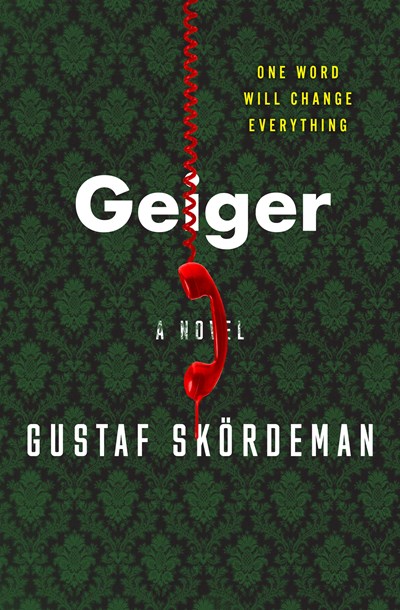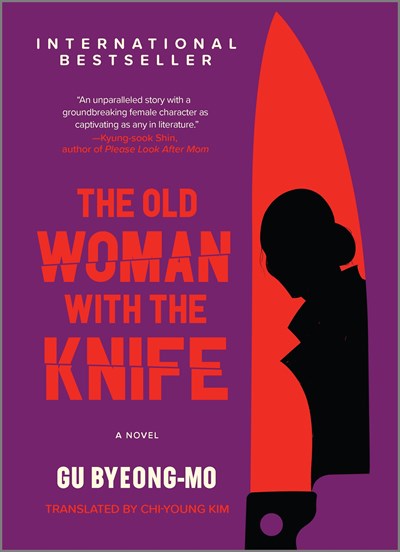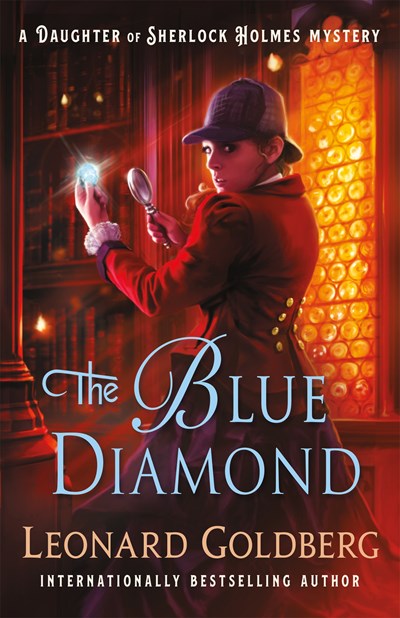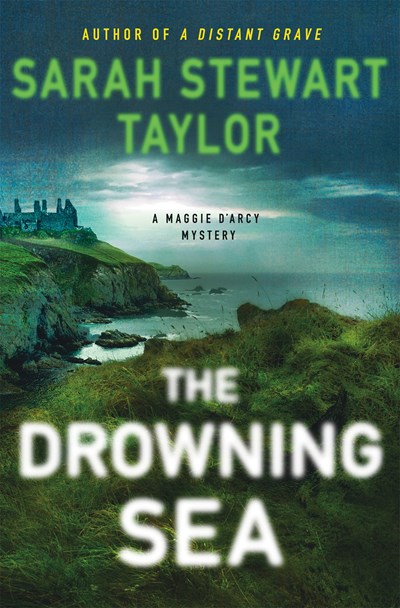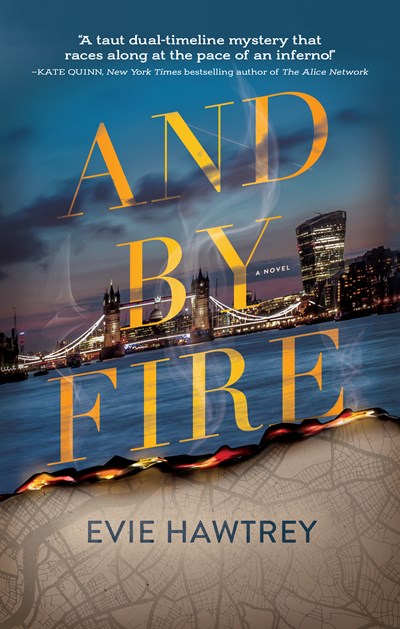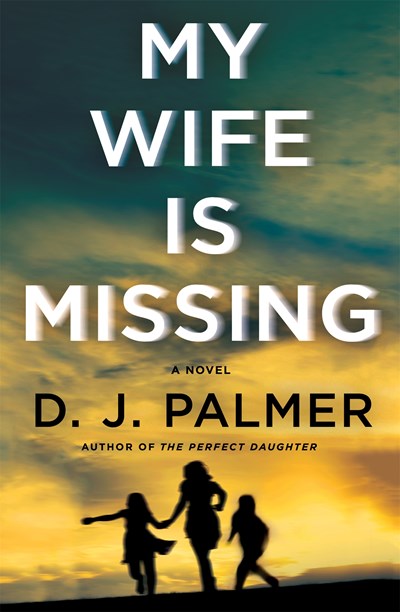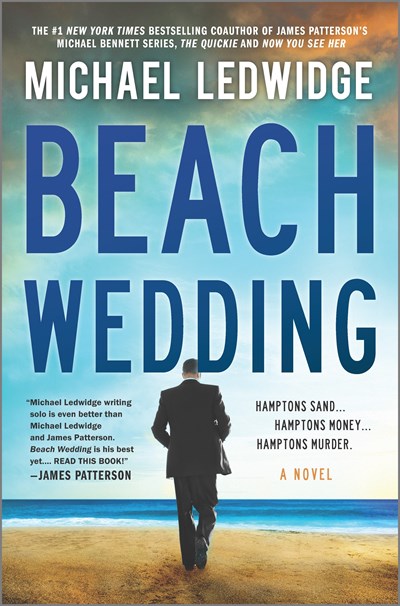Readers will wish that this standalone were the first in a series (though Toyne has written series that readers can fall back on, such as the Sanctus Trilogy). The book starts with a single killing, a seeming locked-room affair, as a woman is discovered murdered in her fortress-like London home that requires fingerprint and facial-recognition access. Her husband is nowhere to be found and is the obvious suspect, but adding perhaps a red herring, perhaps a path to follow, several objects are placed around the body. One of them is a forensic-science manual, How to Process a Murder, which is by the police chief’s estranged daughter, Laughton Rees. Following the grisly opening, the tale continues with chapters presenting perspectives from Laughton, who as a child survived an attack by a serial killer and has never been the same; nervous, kind-hearted Pakistani-Irish cop Tannehill Khan, who soon finds that the crime stats he dreaded presenting to the press are the least of his problems; and a sleazy tabloid journalist who revels in the three Ms: murder, mystery, and money. The wish for a series mainly comes from observing the Tannehill and Laughton characters, who are both burdened with far too much and believe in themselves far too little. The taut and terrifying ending doesn’t hurt either.
Henrietta Thornton
Talk about jumping right into the thick of the story. As Skördeman’s debut opens, a wife says goodbye to her visiting daughters and grandchildren, picks up the phone, and, hearing just the word Geiger, shoots her husband in the head. We have no idea why she would do this nor where she’s headed after immediately going on the run, and what unfolds is more bizarre than we could have imagined. It’s also much weirder than the Swedish public ever thought could happen to the victim, a beloved TV presenter and jolly father figure known as Uncle Stellan. Espionage involving Sweden’s relationship with East Germany during the Cold War and after, and the relationship between Uncle Stellan’s spoiled, mean daughters and their childhood friend and bullying target Sara—now a police officer who elbows her way into the investigation—are highlights of this tale, as are the frequent head-spinning twists. Potential readers should note that child sexual abuse is a major plotline here. For fans of Elizabeth Elo’s Finding Katarina M., which also has echoes of a communist regime.
This startling work upends every stereotype of old ladies and killers. Known as Hornclaw, our protagonist is only 65 but welcomes the invisibleness of appearing elderly so as to better function as a disease control specialist: a hired killer. Under her baggy, mismatched clothes, Hornclaw has such a fearsome body that a TV producer at the gym asks her to be on a show about unusual people. But she fears being forced into retirement soon, a euphemism for being killed by the other specialists at the disease control agency. As we observe the abusive childhood that led Hornclaw to obsessively love her dog, Deadweight, but blithely kill strangers, we’re led toward a hairpin turn in her personality, when she finally cares for someone but it is part of a deadly trap. The story, which immerses readers into everyday life in Seoul, is made unforgettable by Gu’s language as she draws readers into the chilling, beautiful wanderings of Hornclaw’s mind, which flits from contemplating someone eating a peach (“she watches a perfect small world being smashed inside his mouth”) to considering the home of a newly butchered man (“the hallway to the living room seemed to loll like a dead person’s tongue”). For lovers of literary fiction and book clubs that will try something different.
221b Baker St. is home to a new generation, with Sherlock Holmes’s daughter, Joanna, and her husband, Dr. John Watson Jr., son of Sherlock’s longtime sidekick, in residence and solving crimes. In this sixth in the series, Joanna, who’s just as meticulous and insightful as her father, is called by Scotland Yard to help with a series of thefts in hotels around London. Joanna wonders why she and the Yard are required until she learns that the victim of the most recent crime is the governor general of South Africa, and what was stolen from his locked room was the enormously valuable blue diamond, the search for which sets the Watsons questioning everyone from diamond merchants to underworld dealers. In addition, it’s 1917, and the detectives must pursue another stolen item, one that’s crucial to the British effort to win the Great War. This part of the plot sees the famous offspring draw on every ounce of their courage as well as their connections with Sherlock’s Baker St. Irregulars, a gang of ruffian children, to win the day. Along the way, readers will enjoy the many references to Sherlock Holmes’s cases, often the subject of reminiscences by his daughter and her father-in-law; also a pleasure is the relationship between Joanna and John, she a wily sleuth and he an adoring supporter of her eccentricities. For fans of the great detective, of course, but also those who enjoy tales of wartime espionage.
The recent college-admissions scandal comes to mind when meeting the rich, competitive seniors of Colorado’s Falcon Academy High School and their even more fiercely cutthroat moms. Former friendships are thrown to the side when Mia and Sloane, best friends since grade school, both try for a soccer scholarship to UCLA. Their moms, who’ve spent countless hours together at soccer-pitch sidelines over the years, are increasingly at war too. It’s all eye-rolling entertainment for the staff at the school, who must please the moneyed families no matter how ridiculous their obsessions. Probably the most jaded by these mind games is Natalie, a secretary to the principal who has a front seat to the show and whose personal life is slowly being followed down the drain by her professional one. With so many dysfunctional characters and moral rollercoasters, readers won’t know whom to point at or root for when a body is found in the gym. Ward (Beautiful Bad, 2019) does a great job of portraying the disarray caused by meanness and greed, and when characters show unexpected sides, she deftly makes that switch. Note that there’s sexual abuse “off camera” here. For Liane Moriarty’s legions of followers.
Taylor, Sarah Stewart. The Drowning Sea (Maggie D’arcy Mysteries #3). June 2022. 352p. Minotaur.
I tiptoe warily toward books set in my home country, Ireland, fearing they’ll be all priests and mist, but Taylor mines a thoroughly modern Ireland for her thoughtful tale. The setting is West Cork, long a bohemian area that attracts foreigners who like a slower way of life. Taylor shows it being overtaken by the ultra-rich while the local bad boy made good, who owns everything from the gastropub to the manor house, is building a hotel that has locals staging protests and sabotaging construction. The beauty of the area is already working against it, then, when a body washes up on the beach. He’s a member of the area’s Polish community, one of the young people who ease the lives of the rich but struggle themselves, and his death begins to scrape away the veneer of niceness on the town’s past and present. Women steer this story, starting with the series’ star, Maggie D’arcy, a Long Island police officer who’s visiting Ireland but may stay with her new boyfriend and their respective children. There is also a young Polish officer who reluctantly lets Maggie into some aspects of the investigation and an artist whose nebulous memories of a possible past crime seem related to the present-day violence. Tana French fans will love this intricate, relationship-fueled crime story and its strong women characters.
One of the most original books I’ve read in a long while, and one that brings up fascinating questions about the relationship between maps and the places they depict. From the beginning of their studies at the University of Wisconsin, the friends who call themselves the Cartographers live to make maps come alive. After grad school, they begin work on The Dreamer’s Atlas, which will feature “fantastical recreations of real places, and…realistic ones of imaginary places”—for example, the magic-tinged maps from Lord of the Rings will be made to look real and actual places will be given the fantasy treatment. The work is soon abandoned and the friends’ lives take a very wrong turn when they become obsessed with something outside the atlas. Move forward twenty-something years and Nell, daughter of two of the Cartographers, is struggling in a job she hates after being fired years before from the map division at New York Public Library by her father, a legendary archivist there. She and her father haven’t been in touch in all those years, but she’s forced back to the library when he’s found dead at his desk, starting a series of very odd happenings that Nell must get to the bottom of if she doesn’t want to be murdered next. The library crimes here, while shocking, take a welcome back seat to the Cartographers gripping adventure, as Shepherd (The Book of M) lays bare how reality and wishes, passion and pain can coexist and become explosive. For fans of Zakiya Dalila Harris’ The Other Black Girl, which also swerves into unexpected waters.
As it destroys, fire creates mysteries in Hawtrey’s past and present-day London. The Great Fire in 1666 is the fulcrum of the historical story. Before the devastation, we find Christopher Wren politicking as he seeks to build his dream dome at St. Paul’s Cathedral, while stingier planners want to continue the never-ending repairs to the existing roof. Initially outsiders to any drama, courtier to the queen Margaret Dove and Etienne Belland, Margaret’s forbidden love (he is both a foreigner and, as the king’s fireworks maker, a lowly tradesman), find themselves drawn into the fray. When their friend is killed in St. Paul’s during the fire, there may have been more to it than met the eye, and the two continue their romance while looking into what really happened. In the modern city, Nigella Parker and Colm O’Leary are police officers assigned to investigate what becomes a deadly series of fires, by an arsonist who arranges both burned wooden bodies and then real charred victims in poses that seem to mock churches. Like Margaret and Etienne, these two shouldn’t be together—they tried it once and nope—and like their 1666 counterparts, they must fight what appearances seem to dictate and what their instincts tell them to be true. Adding to the atmospheric, absorbing mystery is the depth of research Hawtrey has obviously done on both the Great Fire and St. Paul’s and its famous creator. Try this alongside Robert J. Lloyd’s The Bloodless Boy, which also recreates 17th-century London.
On a family trip to New York City, Michael Hart returns to their hotel from a pizza run only to find his wife and children gone, with only a left-behind teddy bear showing they were ever there. Readers will viscerally feel Michael’s panic and incredulity as he frantically searches the hotel and realizes they are …nowhere. Soon we switch to his wife, Natalie’s, point of view. She and Michael see these events very differently, but readers can’t be sure whether her story is accurate or a product of the terrible insomnia she’s endured for months. What if Natalie’s narrative is all a delusion? What if Michael’s is all a lie? Maybe they’re both lying, or maybe neither is and someone else is behind the terrible events that unfold in the present—a coworker of Natalie’s is murdered—and are revealed as part of one partner’s past. Palmer deftly combines perhaps-unreliable narratives with twists and a heart-tugging chase with children in tow; the explosive ending is both unexpected and satisfying. The author is the son of the late medical-thriller author Michael Palmer, and their work has the same just-one-more-chapter-even-though-it’s-2 am quality. This is a great read for any thriller fan, but is especially recommended to those who enjoyed Alice LaPlante’s Turn of Mind, in which a murder may have been committed by a woman with Alzheimer’s disease.
Having moved from Hamptons townie to hedge-fund millionaire, Tom Rourke spares no expense for his wedding; the mansion where it is held rents for “five” a month—that’s five hundred thousand dollars. Tom’s brother Terry, a Philly police officer, and his family are a bit exhausted by it all but doing their best to relax into the pampering. Those plans are upended when Terry is drawn back into a past injustice. The father of the Rourke clan was the head assistant DA for the county when Noah Sutton, a member of the local elite, was murdered. The man’s wife, Hailey, was brought to trial, a case that drew even international attention and ended with the Rourkes as local outcasts. Terry seeks to make locals eat their words and to find justice for the murdered man, a mission that puts him and his family in danger and takes twists that will keep readers puzzled till the satisfying, unexpected conclusion. Ledwidge (coauthor with James Patterson of Now You See Her and The Quickie) shines in portraying the simmering culture clash that is life in rich towns as well as the best parts—love, humor, protectiveness—of life in close clans. The Patterson connection sells this, but it’s also good for fans of Jane Harper’s The Survivors, which features a long-ago killing in a Tasmanian beach town.


